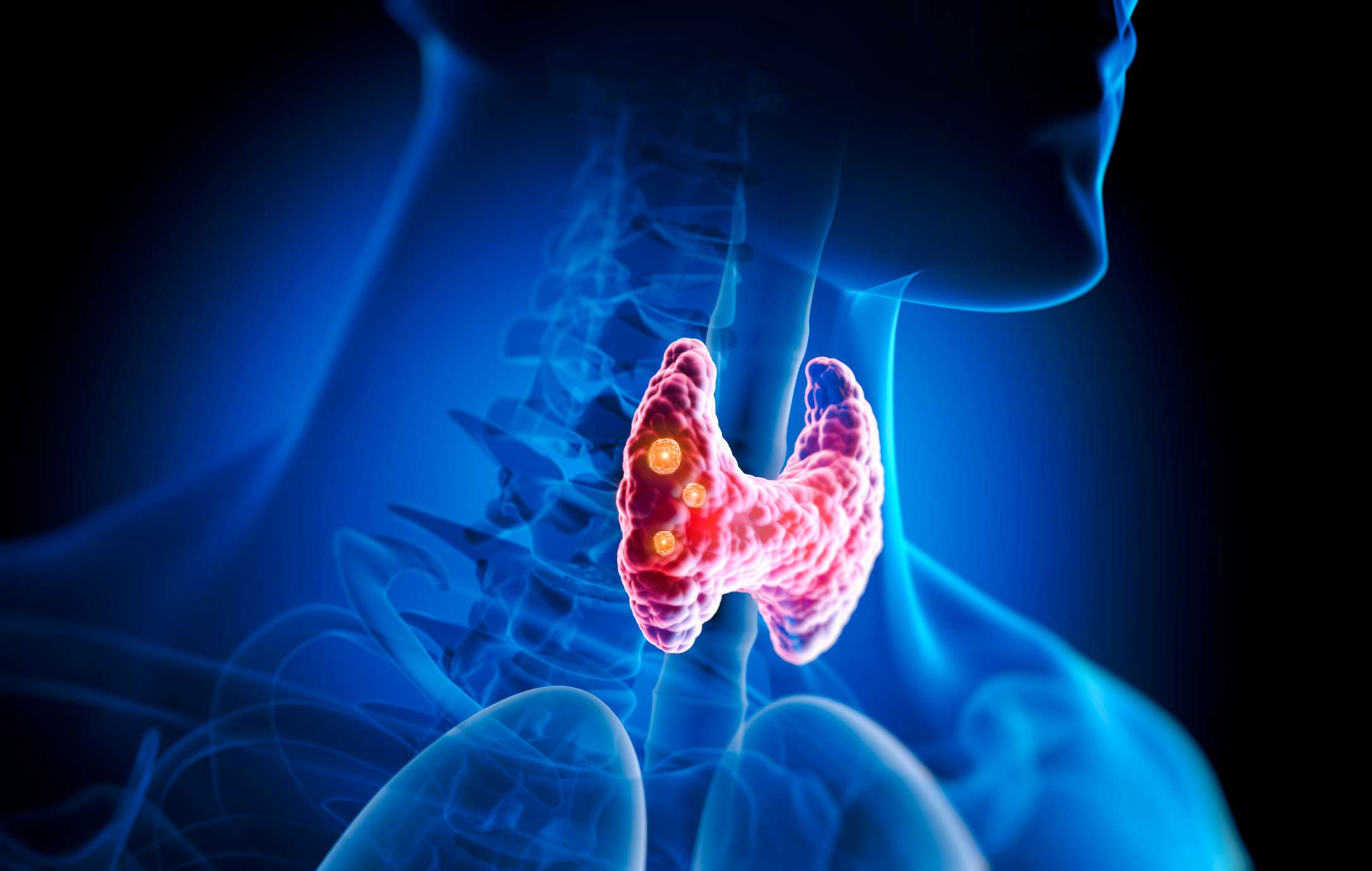The term hyperthyroidism is not a disease in its own right and merely describes increased hormone production by the thyroid gland. There are various possible causes for this.
Graves' disease describes an autoimmune disease in which the thyroid gland is recognized by the immune system as foreign. About two-thirds of cases manifest after the age of 35, with women being affected about five times as often as men. Here, the immune system produces antibodies against proteins on the thyroid cell surface that have a thyroid-stimulating effect. In particular, the TSH receptor antibody (TRAK), plays an important role in Graves' disease.
TRAKs bind to the TSH receptor of thyroid cells, leading to increased hormone production as well as inflammation. Concomitantly, antibodies against thyroglobulin (Tg-AK) and against thyroid peroxidase (TPO-AK) are occasionally elevated in the blood. The exact cause of the disease is currently unknown. In addition to the classic symptoms of hyperthyroidism, there are sometimes eye complaints (endocrine orbitopathy) or swelling in the area of the lower legs (pretibial myxedema).
Thyroid autonomy
Hyperthyroidism can also be caused by thyroid autonomy, with the majority of cases manifesting at older ages. Normally, thyroid hormone production is regulated by a hormone (TSH) produced in the pituitary gland. A small amount of independent (autonomous) - that is, not following TSH - areas in the thyroid gland are normal. However, if these areas increase, hyperthyroidism may result.
The most common cause of thyroid autonomy is iodine deficiency thrombi. The thyroid gland requires the trace element iodine to produce thyroid hormones. A deficiency of iodine leads to increased growth in the thyroid gland as well as nodule formation.
In geographic areas where iodine deficiency is prevalent in the population, the proportion of autonomous areas in the thyroid gland may be large without thyroid dysfunction occurring. However, if normal or excessive intake of iodine (such as from X-ray contrast media) subsequently occurs, this can lead to increased hormone production and subsequently hyperthyroidism due to increased autonomous thyroid tissue.
Inflammation of the thyroid gland (thyroiditis)
In the course of thyroiditis, increased thyroid hormones can be released into the blood due to the destruction of thyroid cells. This is the case, for example, at the onset of chronic thyroiditis(Hashimoto's thyroiditis). It can also be caused by acute bacterial thyroiditis or painful subacute thyroiditis de Quervain.
Drug- or iodine-induced
Increased iodine intake can promote hyperthyroidism. In this case, iodine can either be ingested directly or supplied by iodine-containing drugs, such as amiodarone or x-ray contrast media.
Hyperthyroidism caused by an exogenous supply of thyroid hormones is also known as hyperthyroidism factitia. This form of hyperthyroidism can result from either unintentional over-supplementation of thyroid hormones or can be caused by intentional misuse of hormones. Because hyperthyroidism generally leads to weight loss, hyperthyroidism factitia often affects patients with anorexia nervosa.
Rare causes
Hyperthyroidism may also have other rare causes. These include such things as:
Thyroid cancer
TSH production in the context of a tumor (paraneoplastic)
Gestational hyperthyroidism: this often occurs temporarily in early pregnancy (8-20 weeks gestation) and usually does not require treatment.
Disruption of centrally regulating hormones (central hyperthyroidism): Central hyperthyroidism can be caused, for example, by a benign tumor of the pituitary gland (pituitary adenoma).




